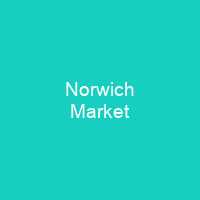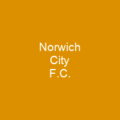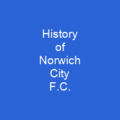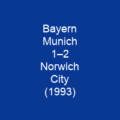Discovering Norwich Market: A Timeless Gem
Norwich Market is an outdoor market consisting of around 200 stalls in central Norwich, England. It was founded in the latter part of the 11th century and has been in operation on its present site for over 900 years. Can you imagine a place that has stood the test of time for nearly a millennium?
The Early Days
In the 14th century, Norwich Market became one of the largest trading hubs in England. However, following a devastating plague and famine, the market’s control was passed to local merchants, and the economy was rebuilt. A Guildhall was built next to the market in the early 15th century, which served as a centre for local government and law enforcement.
The Georgian Era
In the Georgian era, Norwich became a fashionable shopping town, with luxury shops and coaching inns developed around the market. However, by the 19th century, the area had become congested, and few alterations were made to improve it. After World War I, the local authority bought up all the stalls on the market, bringing it into public ownership.
The Modern Era
The rebuilt market, completed in early 2006, is one of the largest markets in Britain, with steel units replacing traditional stalls. The market’s origins date back to the Anglo-Saxon settlement around Tombland, where a major trading centre was established before being redesigned by the Normans after their conquest of England in the 11th century.
The Royal Prerogative and Market Control
Granting the right to trade in Norman England was a part of the Royal Prerogative, and the market at Mancroft was operated under license from the King. The King’s Clerk had jurisdiction over all trade conducted at the market, and tolls and rents were collected on behalf of the King.
The Tollhouse and Guildhall
A tollhouse was built nearby, which served as a collection point for taxes on trade and later became the centre for civil administration in the city. The market at Mancroft supplanted Tombland market at the end of the 11th century due to construction work on Norwich Cathedral.
The Market’s Layout
The marketplace sloped downwards from west to east, with a long straight passageway called the Nethererowe or Gentleman’s Walk marking the eastern boundary. The market was divided into sections for particular trades, with stalls arranged in rows of varying widths.
Regulations and Trade
Highly valuable stalls were generally owned by major institutions and generated a high income for the King and later the city. These were fixed, permanent structures, some with multiple storeys and cellars. The northern section housed fishmongers, butchers, ironmongers, and woolsellers. The southern section housed a bread market and stalls associated with cloth and leather industries.
The Plague and Recovery
In 1348, the Great Mortality reached England, causing widespread death. The plague devastated Norwich’s economy, leading to a significant reduction in population. Famine struck in 1369, overwhelming the burial grounds and necessitating an expansion of St Peter Mancroft’s churchyard.
The Guildhall
In 1404, Norwich secured a royal charter granting it autonomy as ‘The County of the City of Norwich.’ The local council was restructured into a body headed by a Mayor and administered by Sheriffs and Aldermen; the Mayor also formally became Clerk of the Markets. By this time, the tollhouse was proving inadequate and was demolished in 1413 to make way for a new Guildhall.
The Market Cross
Between 1501 and 1503, Mayor John Rightwise had the original market cross demolished and replaced with an elaborate new cross. However, this only survived for a short time due to the English Reformation. A temporary gallows was erected at the cross in 1549 during Kett’s Rebellion, and a local law was enacted demanding that all unemployed men assemble at the market cross each morning.
The Market Today
By the start of the 21st century, Norwich Market had undergone significant changes. The old market was becoming decrepit by the 1990s, with narrow walkways, dingy lighting, and health problems for workers. Norwich City Council proposed three designs to rebuild the market, but they were met with controversy and opposition from stallholders and the public.
The New Design
After a petition of over 12,000 signatories, the council backed down and accepted a new design by architect Michael Innes. The new design retained the market’s layout but introduced prefabricated steel and aluminium stalls with transparent retractable canopies.

Today, Norwich Market remains a vibrant and bustling hub of activity. It continues to serve as a focal point for the city, drawing visitors from all over with its rich history and diverse array of stalls. As you wander through the market, imagine the stories it could tell—each stall, each trade, each visitor contributing to its enduring legacy.
You want to know more about Norwich Market?
This page is based on the article Norwich Market published in Wikipedia (retrieved on November 29, 2024) and was automatically summarized using artificial intelligence.







